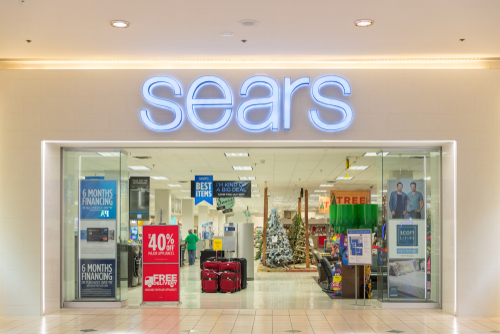US retail giant Sears may get reprieve from liquidation
Sears, the US department store chain that once dominated US shopping malls, may be getting a reprieve.
The firm had been expected to ask a bankruptcy judge for permission to liquidate after failing to reach a deal with chairman Edward Lampert over a $4.4bn (£3.5bn) takeover.
But after last minute negotiations, the firm said on Tuesday it would consider a revised offer from Mr Lampert, which would keep about 425 stores open.
The court must still approve the deal.
Sears did not disclose details of Mr Lampert’s new bid, which it will decide whether or not to accept at an auction planned for 14 January.
To proceed, Mr Lampert must submit a deposit of about $120m tomorrow.
Sears Holdings – which also owns Kmart – first filed for Chapter 11 bankruptcy in October, seeking court protection to reorganise its debts or sell parts of the business.
The 126-year-old firm had almost 690 stores and 68,000 employees when it filed for bankruptcy.
Should liquidation go ahead, many of those would lose their jobs.
However, retail analysts say some parts of the business could be salvaged from any liquidation, such as its home services unit.
In a tweet on Monday, the firm’s social media team said: “We may be slowing down, but we are not out of the race just yet. Don’t count us completely out. Happy Shopping!”
Sears traces its origins to a firm founded by Richard Warren Sears and Alvah Curtis Roebuck in 1886 as a mail order catalogue company.
It opened its first retail locations in 1925 and eventually became a fixture in shopping malls across the US.
It was America’s largest retailer by revenue until 1989, when Walmart overtook it,
In recent years, the company has suffered, along with many other traditional retailers, from rising online competition from firms such as Amazon.
Mr Lampert is the company’s former chief executive, its landlord, and biggest investor and creditor. His hedge fund, ESL Investments, took a stake in Sears in 2004, later combining it with Kmart.
Critics say the firm, under his leadership, failed to invest in its stores, while taking on rising debt.
Neil Saunders, managing director of GlobalData Retail, said: “Reports of Sears headed to liquidation suggest that the much-storied retailer is now at the end of its long road to collapse.
“Its recent journey to this point has been characterised by incredibly poor strategic decisions, chronic underinvestment and continuous financial machinations designed to keep the company afloat.
“All of this impacted trading, which has remained dire, making Sears more like a patient in a coma than a fully functioning retailer.”
Sears became irrelevant
By Samira Hussain, BBC New York business correspondent:
Many stores have come and gone but the demise of a former titan like Sears, signals the end of an era in retail.
When my family needed a new appliance, we would head to Sears. I remember running through the huge store with my brother as my parents looked at new refrigerators or washing machines or vacuum cleaners.
When I got older, I would head to Sears to buy presents from my mum. (The toaster went down badly but the bottle of Chanel No 5 was a hit).
But ask me now when was the last time I walked into a Sears store, and I really couldn’t say. Part of the problem is the storied retailer did not keep up with the competition – and not just online competitors such as Amazon, but even bricks and mortar stores such as Walmart and Target.
After 126 years, it’s sad to see the once-mighty Sears become irrelevant. But that’s capitalism.
The rise and fall of Sears
1893: Richard Sears and Alvah Roebuck start a new mail order business named Sears, Roebuck and Co.
1925: Sears opens its first retail store in Chicago.
1973: Sears’ new headquarters tower – the world’s tallest building at the time – opens in Chicago.
1989: Walmart surpasses Sears in monthly sales.
2004: Eddie Lampert’s hedge fund, ESL Investments, takes a stake in Sears, later combining it with Kmart.
2006: The firm starts an uninterrupted streak of annual sales declines.
2018: The firm starts bankruptcy proceedings.

